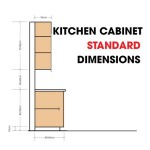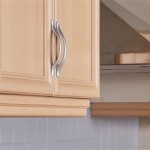Java Gel Stain for Kitchen Cabinets: A Comprehensive Guide
Transforming kitchen cabinets with Java gel stain is a popular choice among homeowners seeking a classic and sophisticated look. This semi-transparent stain enhances the natural wood grain while adding a warm and inviting ambiance. In this article, we will delve into the essential aspects of using Java gel stain on kitchen cabinets, ensuring a successful and stunning outcome.
Choosing the Right Stain
Selecting the appropriate Java gel stain color is crucial. The stain should complement the existing color scheme of the kitchen while adding a touch of your desired aesthetic. Consider factors such as the wood species, lighting conditions, and the overall style of the space. For a subtle and timeless look, opt for a lighter Java stain. If you prefer a more dramatic effect, consider a darker shade.
Surface Preparation
Proper surface preparation is essential for achieving a smooth and even finish. Begin by thoroughly cleaning the cabinet surfaces with a degreaser to remove any dirt, grease, or wax. Sand the surfaces lightly with fine-grit sandpaper (180 or 220 grit) to create a slightly rough texture that will promote adhesion. Wipe down the cabinets again to remove any sanding dust.
Applying the Gel Stain
Java gel stain is applied using a brush or a lint-free cloth. Stir the stain thoroughly before use. Apply the stain in thin, even strokes, following the natural grain of the wood. Wipe away any excess stain immediately with a clean cloth. Allow the first coat to dry completely, which typically takes around eight hours.
Additional Coats
For a deeper and more vibrant color, additional coats of Java gel stain may be necessary. Sand the cabinets lightly between coats with fine-grit sandpaper to create a smooth surface. Wipe down the cabinets to remove any sanding dust, then apply the next coat of stain. Allow each coat to dry completely before sanding and reapplying.
Topcoat Protection
Once the final coat of Java gel stain has dried, apply a protective topcoat to seal the stain and enhance durability. Polyurethane, varnish, or lacquer are popular choices for kitchen cabinets. Apply the topcoat according to the manufacturer's instructions, allowing each coat to dry completely before applying the next.
Maintenance and Care
To maintain the beauty of Java gel stain on kitchen cabinets, regular cleaning is recommended. Wipe down the surfaces with a damp cloth using a mild cleaning solution. Avoid using harsh chemicals or abrasive cleaners, as they can damage the finish. Reapply a topcoat periodically to protect the stain and keep your kitchen cabinets looking their best.

Kitchen In Java Gel Stain And High Performance Top Coat General Finishes Design Center

Java Gel Kitchen Cabinets Black Stained Decor

How To Paint Cabinets With Java Gel Stain My Homier Home

Java Gel Stain Kitchen Transformation General Finishes Design Center

How To Paint Cabinets With Java Gel Stain My Homier Home

Gel Staining Kitchen Cabinets 6 Month Review Merrypad

Pickled Oak Bathroom Vanity Before And After Gel Stain Staining Cabinets Kitchen Makeover Wood

20 Java Gel Stain Tips Salvage Sister And Mister

Gel Stain Cabinets How To Use The Best For Diy Projects

Kitchen Makeover In Java Gel Stain General Finishes Design Center
Related Posts








